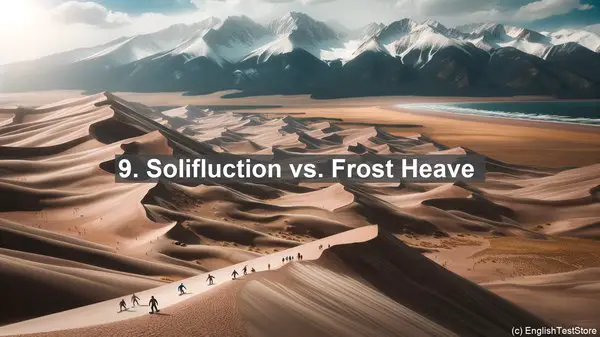Introduction
Welcome to today’s lesson on alpine ecology. In this lesson, we’ll be focusing on a topic that often trips up students – commonly confused words. Understanding these words is crucial for a comprehensive grasp of the subject. So, let’s dive in!
1. Endemic vs. Indigenous
The first pair of words that often causes confusion is ‘endemic’ and ‘indigenous.’ While both refer to species native to a particular region, there’s a subtle difference. ‘Endemic’ species are exclusively found in that region, whereas ‘indigenous’ species can be found in other places too, although they are native to the region in question.
2. Glacier vs. Icefield
Next up, we have ‘glacier’ and ‘icefield.’ These terms are often used interchangeably, but they have distinct meanings. A ‘glacier’ is a large mass of ice that moves slowly, while an ‘icefield’ is a vast expanse of interconnected ice, often covering a mountain range.
3. Moraine vs. Till
Moving on, let’s clarify the difference between ‘moraine’ and ’till.’ Both are types of sediment, but they form in different ways. ‘Moraine’ refers to the accumulation of debris by a glacier, while ’till’ is the unsorted material left behind by a glacier’s retreat.
4. Cirque vs. Arete
Now, let’s talk about ‘cirque’ and ‘arete.’ These are landforms commonly found in alpine regions. A ‘cirque’ is a bowl-shaped depression formed by a glacier, while an ‘arete’ is a sharp ridge that separates two cirques.
5. Scree vs. Talus
The next pair, ‘scree’ and ‘talus,’ both refer to loose rock debris. However, ‘scree’ specifically denotes the small, angular rocks found at the base of a slope, while ‘talus’ refers to a larger accumulation of rocks.

6. Alpine vs. Subalpine
Let’s now discuss the difference between ‘alpine’ and ‘subalpine.’ These terms are used to describe different vegetation zones. ‘Alpine’ refers to the high-altitude zone above the treeline, while ‘subalpine’ is the zone just below it.
7. Snowfield vs. Snowpatch
Moving on, we have ‘snowfield’ and ‘snowpatch.’ While both refer to areas of snow, there’s a difference in their persistence. A ‘snowfield’ is a more permanent feature, often persisting throughout the year, whereas a ‘snowpatch’ is a smaller, temporary accumulation.

8. Fellfield vs. Tundra
Now, let’s differentiate between ‘fellfield’ and ‘tundra.’ These terms describe vegetation types. ‘Fellfield’ refers to the sparse, low-growing vegetation found in rocky alpine areas, while ‘tundra’ is a broader term encompassing the treeless, low-temperature ecosystems of the Arctic and high mountains.
9. Solifluction vs. Frost Heave
The next pair, ‘solifluction’ and ‘frost heave,’ both pertain to soil movement. ‘Solifluction’ is the slow, downhill movement of waterlogged soil, often observed in areas with permafrost. ‘Frost heave,’ on the other hand, is the upward movement of soil due to the expansion of freezing water within it.
10. Nivation vs. Ablation
Lastly, let’s clarify ‘nivation’ and ‘ablation.’ These terms relate to the processes of snow accumulation and loss. ‘Nivation’ encompasses all the processes involved in snow accumulation, while ‘ablation’ refers to the loss of snow through melting, sublimation, or other means.
